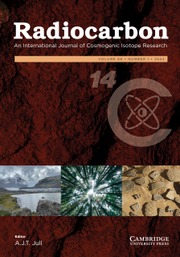Article contents
Overview of pretreatment protocols and 14C measurement quality with AMS facilities (SSAMS and LEA) at the Accelerator Mass Spectrometry Laboratory, Lithuania: Insights from intercomparison tests
Published online by Cambridge University Press: 22 September 2025
Abstract
This study from the Accelerator Mass Spectrometry Laboratory at the Center for Physical Sciences and Technology (FTMC), Vilnius, Lithuania, presents a detailed description of the sample preparation methods employed in the laboratory, with a focus on two AMS systems: a single-stage accelerator mass spectrometer (SSAMS) and a low energy accelerator (LEA). A pivotal aspect of this article is our participation in the GIRI intercomparison test, demonstrating our commitment to precision and accuracy in radiocarbon dating, with the average z-score values of the GIRI test being 0.16 ± 1.66 for SSAMS and –0.04 ± 1.52 for LEA. The outcomes from this participation validate the meticulous sample preparation procedures at Vilnius Accelerator Mass Spectrometry Laboratory and offer significant insights into the efficiency and reliability of SSAMS and LEA systems, contributing to a better understanding of their capabilities in radiocarbon analysis.
Information
- Type
- Research Article
- Information
- Copyright
- © The Author(s), 2025. Published by Cambridge University Press on behalf of University of Arizona
References
- 1
- Cited by


